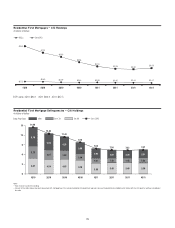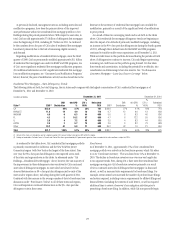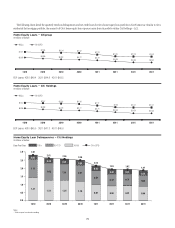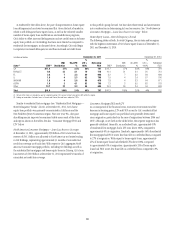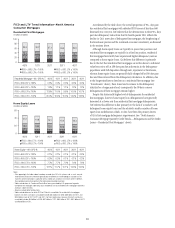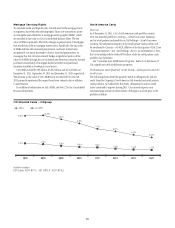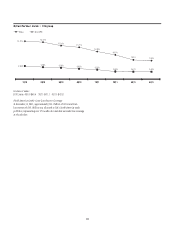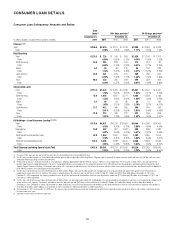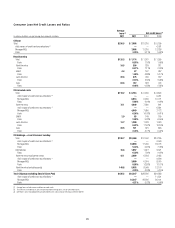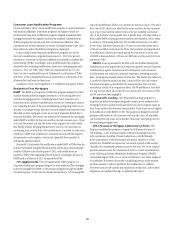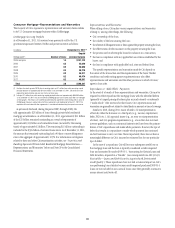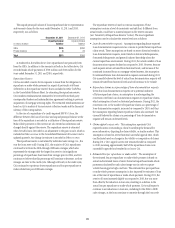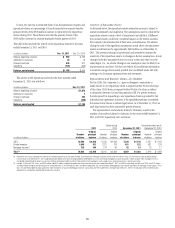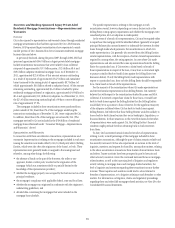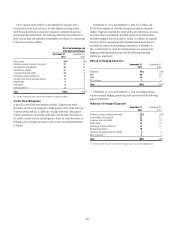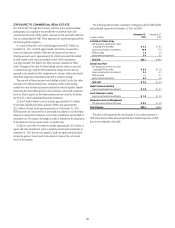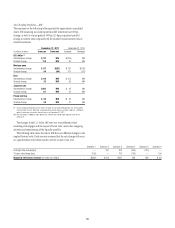Citibank 2011 Annual Report Download - page 108
Download and view the complete annual report
Please find page 108 of the 2011 Citibank annual report below. You can navigate through the pages in the report by either clicking on the pages listed below, or by using the keyword search tool below to find specific information within the annual report.86
Consumer Loan Modification Programs
Citi has instituted a variety of loan modification programs to assist its borrowers
with financial difficulties. Under these programs, the largest of which are
predominately long-term modification programs targeted at residential first
mortgage borrowers, the original loan terms are modified. Substantially all
of these programs incorporate some form of interest rate reduction; other
concessions may include reductions or waivers of accrued interest or fees, loan
tenor extensions and/or the deferral or forgiveness of principal.
Loans modified under long-term modification programs (as well as
short-term modifications originated since January 1, 2011) that provide
concessions to borrowers in financial difficulty are reported as troubled debt
restructurings (TDRs). Accordingly, loans modified under the programs
described below, including modifications under short-term programs since
January 1, 2011, are TDRs. These TDRs are concentrated in the U.S. See
Note 16 to the Consolidated Financial Statements for a discussion of TDRs
and Note 1 to the Consolidated Financial Statements for a discussion of the
allowance for loan losses for these loans.
A summary of Citi’s more significant U.S. modification programs follows:
Residential First Mortgages
HAMP. The HAMP is a long-term modification program designed to reduce
monthly residential first mortgage payments to a 31% housing debt ratio
(monthly mortgage payment, including property taxes, insurance and
homeowner dues, divided by monthly gross income) by lowering the interest
rate, extending the term of the loan and deferring or forgiving (either on an
absolute or contingent basis) principal of certain eligible borrowers who have
defaulted on their mortgages or who are at risk of imminent default due to
economic hardship. The interest rate reduction for residential first mortgages
under HAMP is in effect for five years and the rate then increases up to 1% per
year until the interest rate cap (the lower of the original rate or the Freddie
Mac Weekly Primary Mortgage Market Survey rate for a 30-year fixed rate
conforming loan as of the date of the modification) is reached. In order to be
entitled to a HAMP loan modification, borrowers must provide the required
documentation and complete a trial period (generally three months) by
making the agreed payments.
Historically, Citi accounted for modifications under HAMP as TDRs when the
borrower successfully completed the trial period and the loan was permanently
modified. Effective in the fourth quarter of 2011, trial modifications are
reported as TDRs at the beginning of the trial period. Accordingly, all loans in
HAMP trials as of the end of 2011 are reported as TDRs.
Citi Supplemental. The Citi Supplemental (CSM) program is a
long-term modification program designed to assist residential first mortgage
borrowers ineligible for HAMP or who become ineligible through the HAMP
trial period process. If the borrower already has less than a 31% housing debt
ratio, the modification offered is an interest rate reduction (up to 2.5% with a
floor rate of 4%), which is in effect for two years, and the rate then increases
up to 1% per year until the interest rate is at the pre-modified contractual
rate. If the borrower’s housing debt ratio is greater than 31%, steps similar to
those under HAMP, including potential interest rate reductions, will be taken
to achieve a 31% housing debt ratio. The modified interest rate is in effect
for two years, and then increases up to 1% per year until the interest rate is
at the pre-modified contractual rate. Three trial payments are required prior
to modification, which can be made during the trial period. As in the case
of HAMP as discussed above, all loans in CSM trials as of the end of 2011 are
reported as TDRs.
FHA/VA. Loans guaranteed by the FHA or VA are modified through the
modification process required by those respective agencies and are long-term
modification programs. Borrowers must be delinquent, and concessions
include interest rate reductions, principal forgiveness, extending maturity
dates, and forgiving accrued interest and late fees. The interest rate reduction
is in effect for the remaining loan term. Losses on FHA loans are borne by
the sponsoring agency, provided that the insurance terms have not been
rescinded as a result of an origination defect. The VA establishes a loan-level
loss cap, beyond which Citi is liable for loss. Historically, Citi’s losses on FHA
and VA loans have been negligible.
Responsible Lending. Citi’s Responsible Lending program is a
long-term modification program designed to assist current residential first
mortgage borrowers unable to refinance their loan due to negative equity in
their home and/or other borrower characteristics. These loans are not eligible
for modification under HAMP or CSM. This program is designed to provide
payment relief based on a floor interest rate by product type. All adjustable
rate and interest only loans are converted to fixed rate, amortizing loans for
the remaining mortgage term.
CFNA Permanent Mortgage Adjustment of Terms. This
long-term modification program is targeted to CitiFinancial’s (part of
Citi Holdings – LCL) consumer finance residential mortgage borrowers
with a permanent hardship. Payment reduction is provided through
the re-amortization of the remaining loan balance, typically at a lower
interest rate. Modified loan tenors may not exceed a period of 480 months.
Generally, the rescheduled payment cannot be less than 50% of the original
payment amount unless the adjustment of terms is a result of participation
in the CitiFinancial Home Affordability Modification Program (CHAMP)
(terminated August 2010), or as a result of settlement, court order, judgment
or bankruptcy. Borrowers must make a qualifying payment at the reduced
payment amount in order to qualify for the modification. In addition,
borrowers must provide income and employment verification, and monthly
obligations are validated through an updated credit report.


